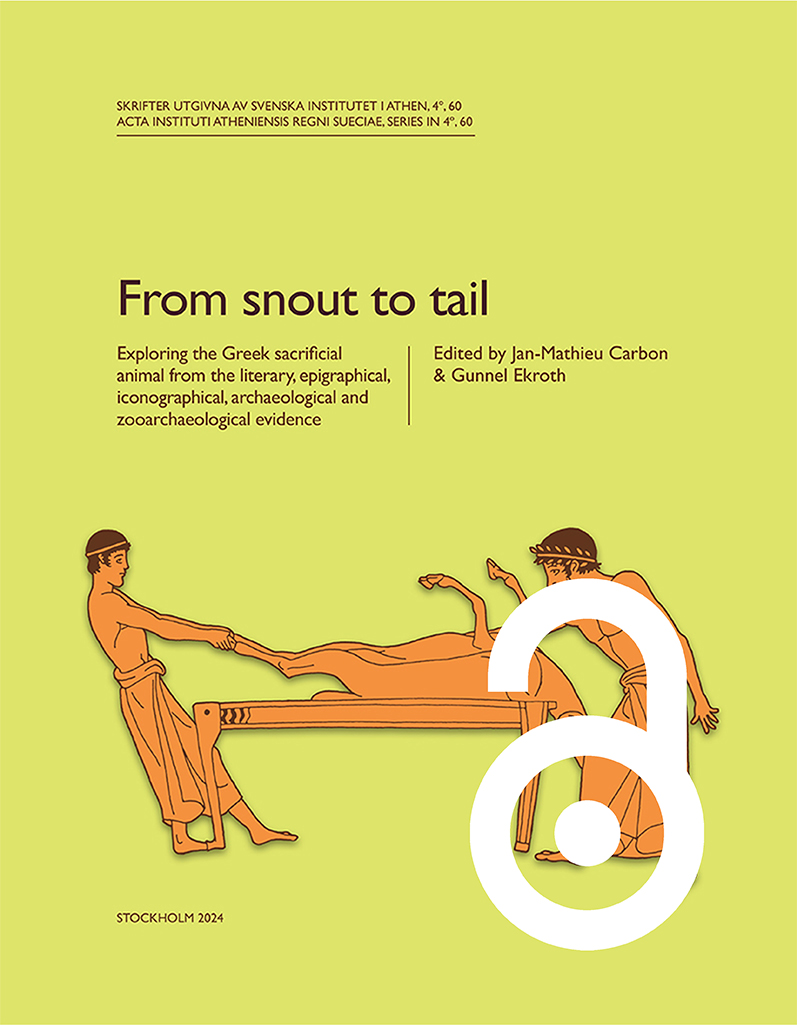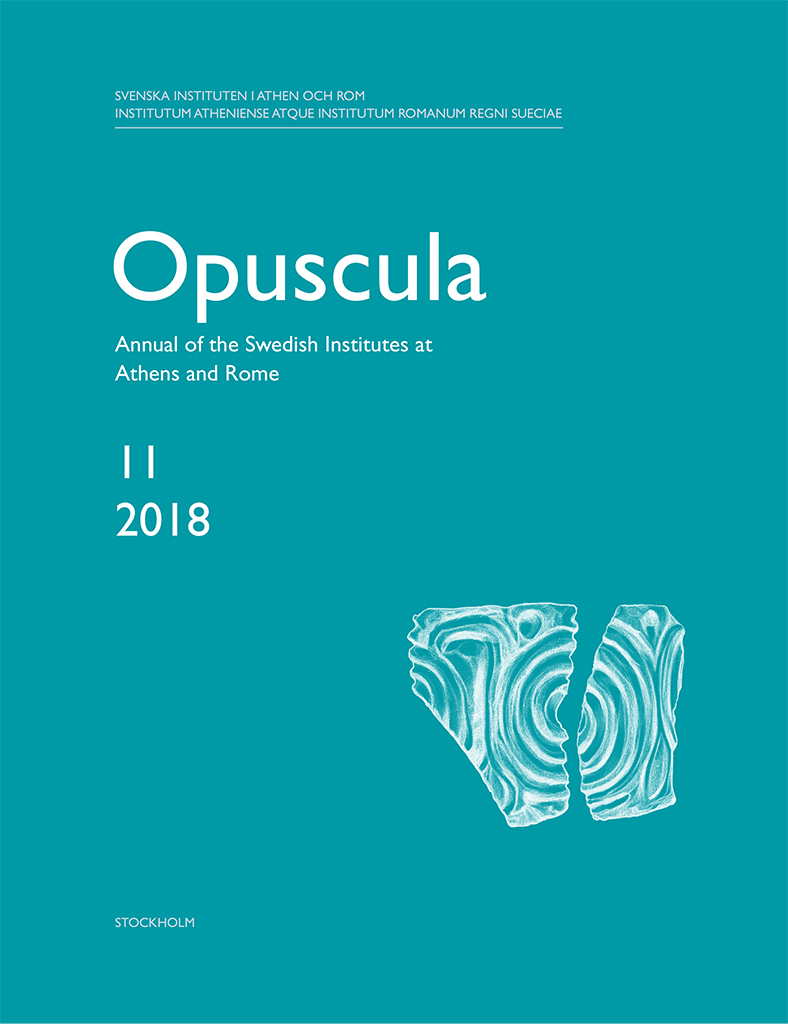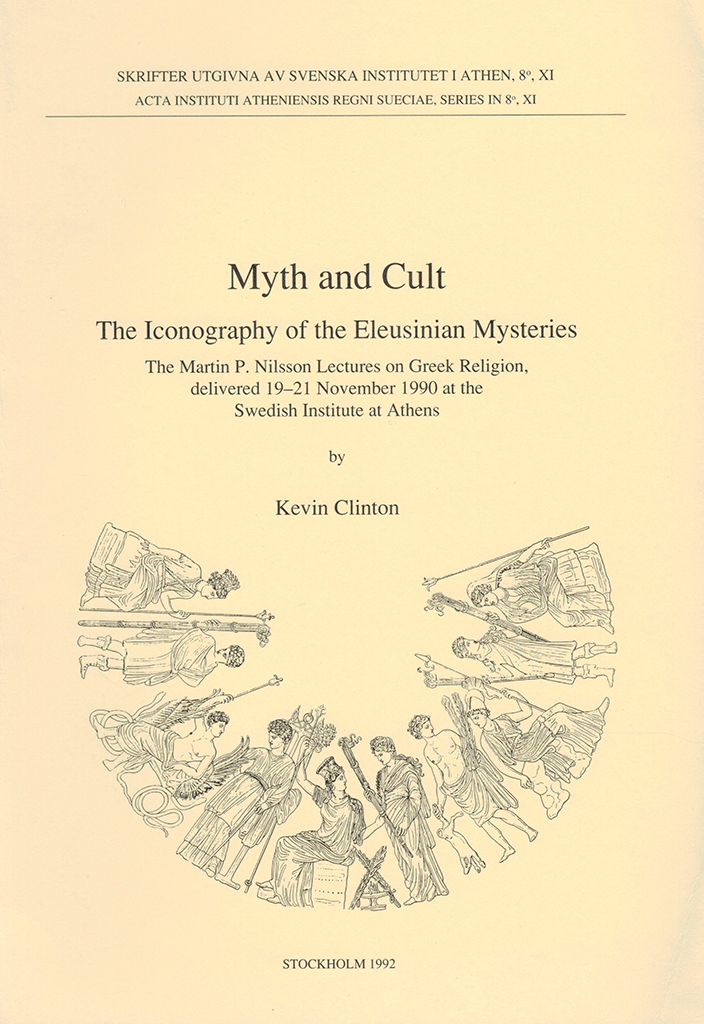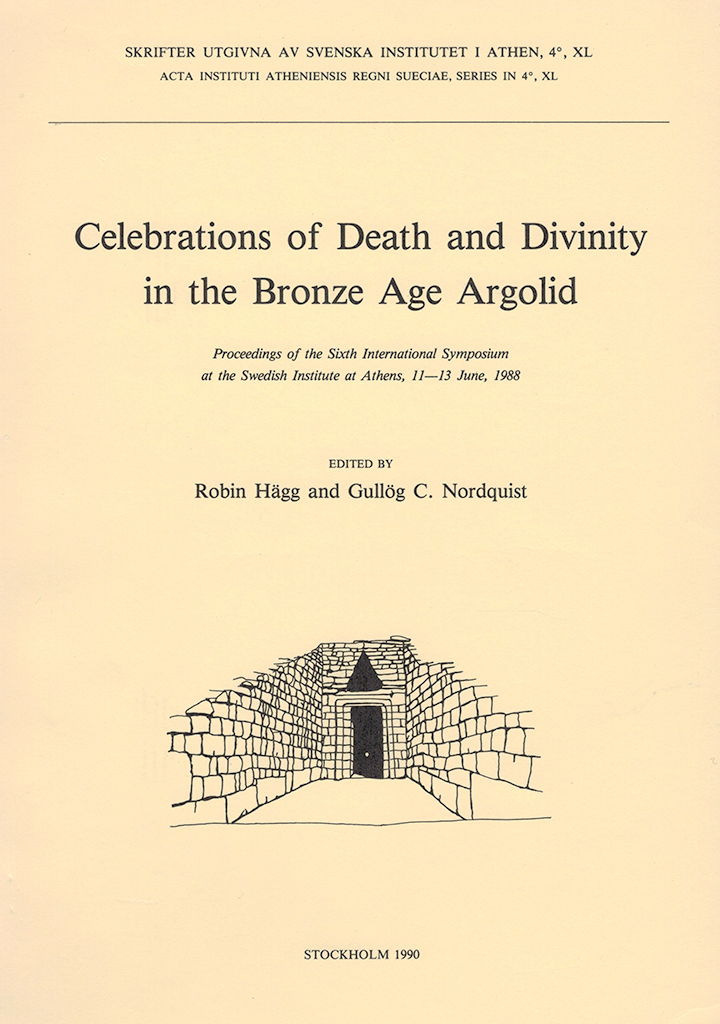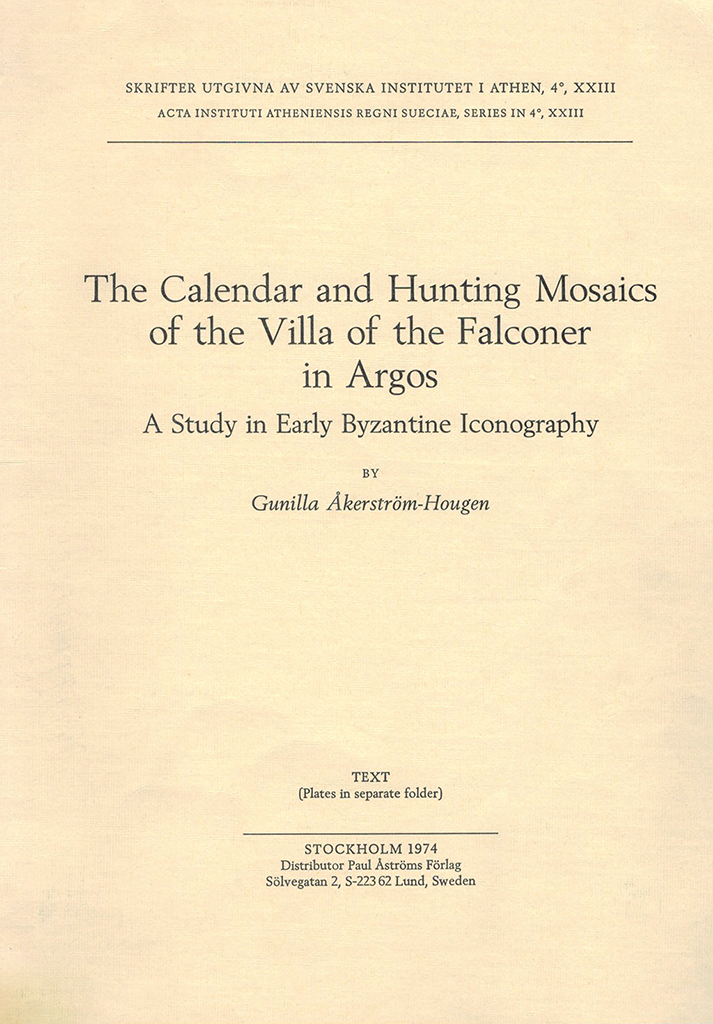Published by the Swedish Institute at Athens. Distributed by Eddy.se AB. All content is available with open access, use links below. From snout to tail. Exploring the Greek sacrificial animal from the literary, epigraphical, iconographical, archaeological, and zooarchaeological evidence Edited by Jan-Mathieu Carbon & Gunnel Ekroth https://doi.org/10.30549/actaath-4-60 Animal sacrifice fundamentally informed how the ancient Greeks defined themselves, their relation to the divine, and the structure of their society. Adopting an explicitly cross-disciplinary perspective, the present volume explores the practical execution and complex meaning of animal sacrifice within ancient Greek religion (c. 1000 BC–AD 200). The objective is twofold. First, to clarify in detail the use and meaning of body parts of the animal within sacrificial ritual. This involves a comprehensive study of ancient Greek terminology in texts and inscriptions, representations on pottery and reliefs, and animal bones found in sanctuaries. Second, to encourage the use and integration of the full spectrum of ancient evidence in the exploration of Greek sacrificial rituals, which is a prerequisite for understanding the complex use and meaning of Greek animal sacrifice. Twelve contributions by experts on the literary, epigraphical, iconographical, archaeological and zooarchaeological evidence for Greek animal sacrifice explore the treatment of legs, including feet and…
Opuscula is published by the Swedish Institutes at Athens and Rome, with the aid of a grant from the Swedish Research Council. Distributed by Eddy.se AB. View journal at ERIH PLUS. All content available with open access. Painting early death. Deceased maidens on funerary vases in the National Archaeological Museum of Athens By Katia Margariti (Independent scholar, Greece). Abstract The present paper studies the iconography of dead maidens depicted on a red-figured funerary loutrophoros and six white-ground lekythoi in the National Archaeological Museum of Athens, all of them dating to the 5th century BC. The scenes painted on the vases under consideration are representative of the iconography employed by Classical Athenian vase-painters for the depiction of deceased maidens, parthenoi. Dead maidens are not frequently seen on funerary clay loutrophoroi, but mostly appear in psychopompoi, tomb visit, and prothesis scenes of white lekythoi, where their premature death before marriage is often emphasized by the fact that they are shown as brides through the use of wedding iconography elements. They are never portrayed being carried by Hypnos and Thanatos, but are only taken to Hades by Hermes and Charon. Even though the loutrophoros is generally considered to be the symbol par excellence…
Opuscula is published by the Swedish Institutes at Athens and Rome, with the aid of a grant from the Swedish Research Council. Distributed by Eddy.se AB. View journal at ERIH PLUS. All content available with open access. Power and coinage. The portrait tetradrachms of Eumenes II By Marie-Christine Marcellesi Abstract Among other innovations in coinage, the portrait tetradrachms of Eumenes II testify to the interest that the Attalid king showed in coinage. It is difficult to date these coins using purely numismatic criteria. The generally favoured late dating is based on the notion that this was a short-lived coinage, but it may well have been struck – possibly at intervals – over a relatively long period of Eumenes II’s reign. In this paper I defend an early dating for the starting point of this coinage, in the first half of the reign and even in the first years, before the Treaty of Apamea. The historical context of the rising power of Rome in the Eastern Mediterranean after the Second Macedonian War may explain the original features of this coinage and its iconography, which shows a will to affirm a personal power and also suggests a connection with Rome through the…
Opuscula is published by the Swedish Institutes at Athens and Rome, with the aid of a grant from the Swedish Research Council. Distributed by Eddy.se AB. View journal at ERIH PLUS. All content available with open access. Cutting the Gordian knot. The iconography of Megaron 2 at Gordion By Susanne Berndt Abstract This article examines the incised drawings of Early Phrygian Gordion, and in particular those of Megaron 2. Aspects of their iconographic and archaeological contexts are taken in to consideration, as well as literary sources and especially the story of the Gordian knot. The focus of the study is a series of incised labyrinths, which have hitherto not been recognized as such, but which are of particular interest for the analysis of this building. The myth of Theseus and the Minotaur in the labyrinth helps to throw light on both the images of Megaron 2 but also on the story of the Gordion knot, and how these are interlinked with each other. It is suggested that Ariadne’s ball of thread and the Gordian knot are two different expressions of a similar concept; both represent sovereignty provided by a Goddess. Megaron 2 seems to have been a building that was…
Published by the Swedish Institute at Athens. Distributed by Astrom Editions. Myth and cult. The iconography of the Eleusinian Mysteries. The Martin P. Nilsson Lectures on Greek Religion, delivered 19–21 November 1990 at the Swedish Institute at Athens By Kevin Clinton Abstract Iconography serves as the starting part for the treatment of central aspects of the myth and cult of the Eleusinian Mysteries. The presence of the Mirthless Rock in artistic presentations, its location in the sanctuary, and its relation to the Callichoron Well provide a perspective for assessing the aetiological elements in the Homeric Hymn to Demeter and the relation of the Hymn to Eleusis. The Iconography of Eubouleus, Iakchos, and Eumolpos is established, and that of Triptolemos and Ploutos is discussed extensively. The importance of Eubouleus in artistic representations is seen to correspond to his importance in the Mysteries, and the identification of him in certain scenes reveals his function in the myth of the Mysteries. Discussion of his role in the Thesmophoria leads to an examination of the relation of the Mysteries to the Thesmophoria. The various roles of all these figures in artistic representations provide a basis for revised interpretations of several works of art, and…
Published by the Swedish Institute at Athens. Distributed by Astrom Editions. Celebrations of death and divinity in the Bronze Age Argolid. Proceedings of the Sixth International Symposium at the Swedish Institute at Athens, 11–13 June, 1988 Edited by Robin Hägg & Gullög C. Nordquist Abstract Twenty-four papers on various aspects of burial customs and religious cult practice in the region Argolis (Greece) during the Bronze Age, read at an international conference in Athens; the papers are followed by transcripts of the discussions of the symposium. The papers are arranged in six groups, discussing (1) ceremonial practices in the Early and Middle Helladic periods, (2) mortuary customs, state formation and Mycenaean society, (3) burial rites in tumuli, tholoi and chamber tombs, (4) symbols and symbolism in Mycenaean celebrations, (5) Mycenaean cults and cult practices, and (6) religious aspects of the post-Bronze-Age period. Contents Preface (p. 7) Ceremonial practices in the Early and Middle Helladic periods Daniel J. Pullen, ‘Early Helladic burials at Asine and Early Bronze Age mortuary practices’, pp. 9–12 Miriam Caskey, ‘Thoughts on Early Bronze Age hearths’, pp. 13–21 Carol Zerner, ‘Ceramics and ceremony: Pottery and burials from Lerna in the Middle and early Late Bronze Ages’, pp. 23–34…
Published by the Swedish Institute at Athens. Distributed by Astrom Editions. The calendar and hunting mosaics of the Villa of the Falconer in Argos. A study in early Byzantine iconography By Gunilla Åkerström-Hougen Contents Preface 1. Introduction 2. Description 3. Composition 4. Costume and equipment 5. Style 6. Iconography 7. Appendix: Late Roman and Byzantine representations of the calendar 8. Summary Bibliography Abbreviations General index Bibliographical information Gunilla Åkerström-Hougen, The calendar and hunting mosaics of the Villa of the Falconer in Argos. A study in early Byzantine iconography (Skrifter utgivna av Svenska institutet i Athen, 4°, 23), Stockholm 1974. ISSN 0586-0539. ISBN 9789185086108. Softcover: 167 pages + 12 plates in separate folder. Alternative series title: Acta Instituti Atheniensis Regni Sueciae series in 4˚, XXIII Reviews American Journal of Archaeology 81:1, 109–110 (Anthony Cutler) Bulletin de l’Association Guillaume Budé 1976, 430–433 (Michèle Blanchard) Bulletin de l’Association internationale pour l’étude de la mosaïque antique 7, 1978, 300–305 (J.P. Sodini) Byzantinische Zeitschrift 73:1 (Raffaela Farioli) The Classical Review 26:2, 256–258 (Michael Vickers) The Classical World 69:7, 487 (J.K. Anderson) Journal of Hellenic Studies 96, 256–257 (Elisabeth Waywell) L’Antiquité Classique 44:2, 808–810 (Charles Delvoye) Revue des études grecques 89, 1976, 140–142 (Philippe Bruneau)

